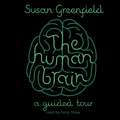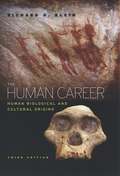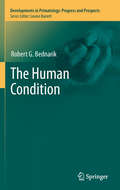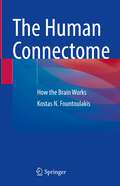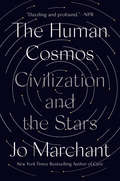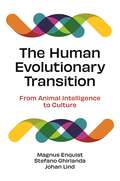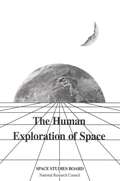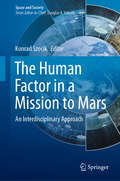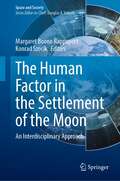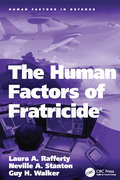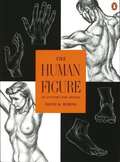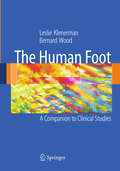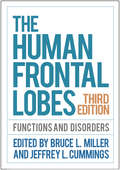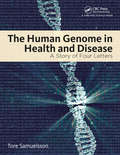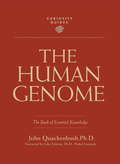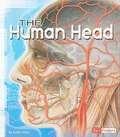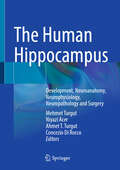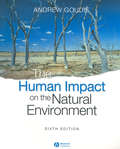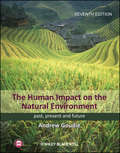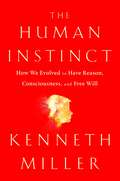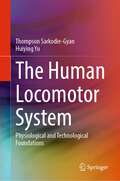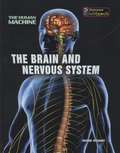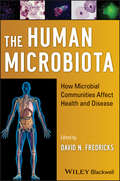- Table View
- List View
The Human Brain: A Guided Tour (SCIENCE MASTERS)
by Susan GreenfieldLocked away remote from the rest of the body in its own custom-built casing of skull bone, with no intrinsic moving parts, the human brain remains a tantalising mystery. But now, more than ever before, we have the expertise to tackle this mystery - the last 20 years have seen astounding progress in brain research. Susan Greenfield begins by exploring the roles of different regions of the brain. She then switches to the opposite direction and examines how certain functions, such as movement and vision, are accommodated in the brain. She describes how a brain is made from a single fertilized egg, and the fate of the brain is traced through life as we see how it constantly changes as a result of experience to provide the essence of a unique individual.A bite-sized science classic, read by Fiona Shaw(p) 1997 Orion Publishing Group
The Human Career: Human Biological and Cultural Origins (3rd edition)
by Richard G. KleinKlein (anthro, U. of Chicago) summarizes our current knowledge and ongoing debates about human evolution from the earliest primates to modern man. Both the fossil and archaeological evidence is examined, showing the relationship between human form and behavior.
The Human Condition
by Robert G. BednarikThis book summarizes the work of several decades, culminating in a revolutionary model of recent human evolution. It challenges current consensus views fundamentally, presenting in its support a mass of evidence, much of which has never been assembled before. This evidence derives primarily from archaeology, paleoanthropology, genetics, clinical psychology, neurosciences, linguistics and cognitive sciences. No even remotely similar thesis of recent human origins has ever been published, but some of the key elements of this book have been published by the author in major refereed journals in the last two years. Its implications are far-reaching and profoundly affect the way we perceive ourselves as a species. This book about what it means to be human is heavily referenced, with a bibliography of many hundreds of scientific entries.
The Human Connectome: How the Brain Works
by Kostas N. FountoulakisThis book constitutes the end result of 20 years-long effort that goes beyond a Psychiatrist’s standard clinical training and education, even that of a Psychiatrist that follows an academic career. Trying to explain how the human mind works is hard and the heterogeneity of the audience make the attempt even more difficult. There is a conceptual difference between the words ‘brain’ and ‘mind’and this makes the effort even more difficult since the present book tries to preserve the strict scientific approach concerning all the topics discussed. The work elaborates and tries to answer questions frequently phrased by audiences in teaching classes and in conferences and does not avoid any question. In order to achieve this goal, it is structured in chapters all the way from the molecule and the cell to consciousness and free will. The book targets mainly the mental health care professionals as an audience, and to a lesser extend the other health professionals. It is written according to the author’s view concerning the training and educational needs of Psychiatrists and Psychologists and to a lesser degree of Neurologists and Neuroscientists in general.
The Human Cosmos: Civilization and the Stars
by Jo Marchant"A tour de force on par with Sapiens by Yuval Noah Harari"—Booklist (starred review)"One to savor"—Publishers Weekly (starred review)An historically unprecedented disconnect between humanity and the heavens has opened. Jo Marchant's book can begin to heal it. For at least 20,000 years, we have led not just an earthly existence but a cosmic one. Celestial cycles drove every aspect of our daily lives. Our innate relationship with the stars shaped who we are--our art, religious beliefs, social status, scientific advances, and even our biology. But over the last few centuries we have separated ourselves from the universe that surrounds us. It's a disconnect with a dire cost. Our relationship to the stars and planets has moved from one of awe, wonder and superstition to one where technology is king--the cosmos is now explored through data on our screens, not by the naked eye observing the natural world. Indeed, in most countries modern light pollution obscures much of the night sky from view. Jo Marchant's spellbinding parade of the ways different cultures celebrated the majesty and mysteries of the night sky is a journey to the most awe inspiring view you can ever see--looking up on a clear dark night. That experience and the thoughts it has engendered have radically shaped human civilization across millennia. The cosmos is the source of our greatest creativity in art, in science, in life. To show us how, Jo Marchant takes us to the Hall of the Bulls in the caves at Lascaux in France, and to the summer solstice at a 5,000-year-old tomb at New Grange in Ireland. We discover Chumash cosmology and visit medieval monks grappling with the nature of time and Tahitian sailors navigating by the stars. We discover how light reveals the chemical composition of the sun, and we are with Einstein as he works out that space and time are one and the same. A four-billion-year-old meteor inspires a search for extraterrestrial life. The cosmically liberating, summary revelation is that star-gazing made us human.
The Human Essence: The Sources of Science and Art
by George ThomsonThis book is a short introduction to Marxism that addresses its political, historical and ideological aspects of science and art.
The Human Evolutionary Transition: From Animal Intelligence to Culture
by Magnus Enquist Stefano Ghirlanda Johan LindA major new theory of why human intelligence has not evolved in other speciesThe Human Evolutionary Transition offers a unified view of the evolution of intelligence, presenting a bold and provocative new account of how animals and humans have followed two powerful yet very different evolutionary paths to intelligence. This incisive book shows how animals rely on robust associative mechanisms that are guided by genetic information, which enable animals to sidestep complex problems in learning and decision making but ultimately limit what they can learn. Humans embody an evolutionary transition to a different kind of intelligence, one that relies on behavioral and mental flexibility. The book argues that flexibility is useless to most animals because they lack sufficient opportunities to learn new behavioral and mental skills. Humans find these opportunities in lengthy childhoods and through culture.Blending the latest findings in fields ranging from psychology to evolutionary anthropology, The Human Evolutionary Transition draws on computational analyses of the problems organisms face, extensive overviews of empirical data on animal and human learning, and mathematical modeling and computer simulations of hypotheses about intelligence. This compelling book demonstrates that animal and human intelligence evolved from similar selection pressures while identifying bottlenecks in evolution that may explain why human-like intelligence is so rare.
The Human Exploration of Space
by Committee on Human ExplorationInformation on the Human Exploration of Space
The Human Factor in a Mission to Mars: An Interdisciplinary Approach (Space and Society)
by Konrad SzocikA manned mission to Mars is faced with challenges and topics that may not be obvious but of great importance and challenging for such a mission. This is the first book that collects contributions from scholars in various fields, from astronomy and medicine, to theology and philosophy, addressing such topics. The discussion goes beyond medical and technological challenges of such a deep-space mission. The focus is on human nature, human emotions and biases in such a new environment.The primary audience for this book are all researchers interested in the human factor in a space mission including philosophers, social scientists, astronomers, and others. This volume will also be of high interest for a much wider audience like the non-academic world, or for students.
The Human Factor in the Settlement of the Moon: An Interdisciplinary Approach (Space and Society)
by Konrad Szocik Margaret Boone RappaportApproaching the settlement of our Moon from a practical perspective, this book is well suited for space program planners. It addresses a variety of human factor topics involved in colonizing Earth's Moon, including: history, philosophy, science, engineering, agriculture, medicine, politics & policy, sociology, and anthropology. Each chapter identifies the complex, interdisciplinary issues of the human factor that arise in the early phases of settlement on the Moon. Besides practical issues, there is some emphasis placed on preserving, protecting, and experiencing the lunar environment across a broad range of occupations, from scientists to soldiers and engineers to construction workers. The book identifies utilitarian and visionary factors that shape human lives on the Moon. It offers recommendations for program planners in the government and commercial sectors and serves as a helpful resource for academic researchers. Together, the coauthors ask and attempt to answer: “How will lunar society be different?”
The Human Factors of Fratricide (Human Factors in Defence)
by Neville A. Stanton Laura A. RaffertyFratricide has been defined as firing on your own forces, when mistaking them for enemy forces, which results in injury or death. Rates of fratricide incidence have been steadily increasing and the complexity of the contemporary operating environment may lead to a continuation of this trend. Although the majority of research into fratricide has focused on the development of technological decision aids, recent explorations highlight the need to emphasise the social aspects within a socio-technical framework. This book presents and validates, via the use of case studies, a model of teamwork and decision-making factors that are associated with incidents of fratricide. In summary, it offers a review and evaluation of contemporary theoretical perspectives on teamwork and fratricide, as well as a range of accident analysis approaches. A novel theory of fratricide is then presented followed by a new methodology for assessing fratricide. Naturalistic case studies of teams are undertaken in the military domain. These studies illustrate the approach and offer early validation evidence. In closing, the book presents a series of principles designed to reduce the likelihood of fratricide in the future.
The Human Figure: An Anatomy For Artists
by David K. RubinsA brief yet in-depth presentation of the human anatomy.
The Human Foot
by Bernard Wood Leslie KlenermanUnique study of the human foot Sole perspective on the human foot in the market
The Human Frontal Lobes, Third Edition: Functions and Disorders
by Jeffrey L. Cummings Bruce L. MillerThis authoritative work, now thoroughly revised, has given thousands of clinicians, students, and researchers a state-of-the-art understanding of the human frontal lobes--the large brain region that plays a critical role in behavior, cognition, health, and disease. Leading experts from multiple disciplines address the anatomy and chemistry of the frontal cortex, neuropsychological assessments of capabilities unique to the frontal lobes, the nature of (and possible treatment avenues for) frontotemporal dementia and related conditions, and implications for understanding and treating neuropsychiatric disorders, such as schizophrenia, mania, and depression. Illustrations include eight pages in full color. New to This Edition: *Reflects a decade of important research advances in such areas as functional connectivity mapping of frontal and frontal-subcortical circuits. *Incorporates significant new information on frontotemporal dementia and other neurological disorders. *Expanded section on neuropsychiatric disorders, with new chapters on apathy, dissociative states, and antisocial behavior. *Chapters on salience networks, normal brain aging, white matter diseases, and clinical trials. *Increased attention to brain processes involved in moral reasoning, empathy, decision making, and other key human capabilities.
The Human Genome in Health and Disease: A Story of Four Letters
by Tore SamuelssonThe human genome is a linear sequence of roughly 3 billion bases and information regarding this genome is accumulating at an astonishing rate. Inspired by these advances, The Human Genome in Health and Disease: A Story of Four Letters explores the intimate link between sequence information and biological function. <P><P>A range of sequence-based functional units of the genome are discussed and illustrated with inherited disorders and cancer. In addition, the book considers valuable medical applications related to human genome sequencing, such as gene therapy methods and the identification of causative mutations in rare genetic disorders. <P><P>The primary audiences of the book are students of genetics, biology, medicine, molecular biology and bioinformatics. Richly illustrated with review questions provided for each chapter, the book helps students without previous studies of genetics and molecular biology. It may also be of benefit for advanced non-academics, which in the era of personal genomics, want to learn more about their genome. <P><P> Key selling features: <P><P>Molecular sequence perspective, explaining the relationship between DNA sequence motifs and biological function <P><P>Aids in understanding the functional impact of mutations and genetic variants <P><P>Material presented at basic level, making it accessible to students without previous studies of genetics and molecular biology <P><P>Richly illustrated with questions provided to each chapter
The Human Genome: The Book of Essential Knowledge
by John QuackenbushThe DNA sequence that comprises the human genome--the genetic blueprint found in each of our cells--is undoubtedly the greatest code ever to be broken. Completed at the dawn of a new millennium, the feat electrified both the scientific community and the general public with its tantalizing promise of new and better treatments for countless diseases, including Alzheimer's, cancer, diabetes, and Parkinson's. Yet what is arguably the most important discovery of our time has also opened a Pandora's box of questions about who we are as humans and how the unique information stored in our genomes can and might be used, making it all the more important for everyone to understand the new science of genomics. In the CURIOSITY GUIDE TO THE HUMAN GENOME, Dr. John Quackenbush, a renowned scientist and professor, conducts a fascinating tour of the history and science behind the Human Genome Project and the technologies that are revolutionizing the practice of medicine today. With a clear and engaging narrative style, he demystifies the fundamental principles of genetics and molecular biology, including the astounding ways in which genes function, alone or together with other genes and the environment, to either sustain life or trigger disease. In addition, Dr. Quackenbush goes beyond medicine to examine how DNA-sequencing technology is changing how we think of ourselves as a species by providing new insights about our earliest ancestors and reconfirming our inextricable link to all life on earth. Finally, he explores the legal and ethical questions surrounding such controversial topics as stem cell research, prenatal testing, forensics, and cloning, making this volume of the Curiosity Guides series an indispensable resource for navigating our brave new genomic world.
The Human Head
by Kathy Allen Jenny KruegerEyes, nose, mouth you can see what's on your head. But do you know what goes on under the surface? Explore the layers of the human head to find out what really goes on behind your smile.
The Human Hippocampus: Development, Neuroanatomy, Neurophysiology, Neuropathology and Surgery
by Mehmet Turgut Concezio Di Rocco Ahmet T. Turgut Niyazi AcerWritten and edited by leading international authorities in the field, this book provides an in-depth review of knowledge of human hippocampus, and role of the hippocampus in memory, cognition and learning. It includes informative chapters organized into two main groups: (1), fundamental information about the human hippocampus, including history, development, neuroanatomy, neurophysiology, neuropathology, structural and synaptic plasticity, volume, 3D visualition of the human hippocampus and etc.; and (2) role of the hippocampus in memory, cognition and learning, including role of the hippocampus in cognition, time and memory, learning and etc. There are some unique features about this book: cross-references within chapters to highlight connections between development, anatomy, physiology, pathology, and surgery, real-world examples to illustrate key points and practical applications, summaries of the latest research to keep readers informed of cutting-edge developments. Thus, this comprehensive reference book will be an ideal source for neuroscientists at all levels, from graduate students to researchers in specific disciplines studying this region including neurosurgeons, neurologists, neuroradiologists, neuroanatomists and psychiatrists who seek both basic and more advanced information regarding the human hippocampus.
The Human Impact of Climate Uncertainty: Weather Information, Economic Planning, and Business Management
by W. J. MaunderOriginally published in 1989, this book provides an overview of the economic dimensions of climate and human activities, and considers how the variable nature of the atmosphere must be accepted as an integral part of the management package. It discusses how climatic repercussions can hold major importance for international politics, particularly in the light of the impacts of climatic changes induced by greenhouse gases.
The Human Impact on the Natural Environment: Past, Present, and Future
by Andrew S. GoudieThe new edition of this classic student text provides an up-to-date and comprehensive view of the major environmental issues facing the world today, and is an essential introduction to the past, present and future impact of humans on Earth. Explores the impact of humans upon vegetation, animals, soils, water, landforms, and the atmosphere. Updated extensively, with many new figures and up-to-date statistics. Four completely new chapters explore the ways in which global climate change may have an impact on Earth in the future. A new design makes the text even more accessible and easy to use. Visit www.blackwellpublishing.com/humanimpact to access the artwork from the book.
The Human Impact on the Natural Environment: Past, Present, and Future
by Andrew S. GoudieThe seventh edition of this classic student text explores the multitude of impacts that humans have had over time upon vegetation, animals, soils, water, landforms and the atmosphere. It also looks into the future and considers the ways in which climate changes and modifications in land cover may change the environment in coming decades. Extensively re-written, it contains many new statistical tables, figures, and references. It is essential reading for undergraduates in geography and environmental science, and for those who want a thorough, wide-ranging and balanced overview of the impacts of humans upon natural processes and systems from the Stone Age to the Anthropocene and who wish to understand the major environmental issues that concern the human race at the present time. Additional resources for this book can be found at: www.wiley.com/go/goudiehumanimpact.
The Human Instinct: How We Evolved to Have Reason, Consciousness, and Free Will
by Kenneth R. MillerA radical, optimistic exploration of how humans evolved to develop reason, consciousness, and free will.Lately, the most passionate advocates of the theory of evolution seem to present it as bad news. Scientists such as Richard Dawkins, Lawrence Krauss, and Sam Harris tell us that our most intimate actions, thoughts, and values are mere byproducts of thousands of generations of mindless adaptation. We are just one species among multitudes, and therefore no more significant than any other living creature. Now comes Brown University biologist Kenneth R. Miller to make the case that this view betrays a gross misunderstanding of evolution. Natural selection surely explains how our bodies and brains were shaped, but Miller argues that it’s not a social or cultural theory of everything. In The Human Instinct, he rejects the idea that our biological heritage means that human thought, action, and imagination are pre-determined, describing instead the trajectory that ultimately gave us reason, consciousness and free will. A proper understanding of evolution, he says, reveals humankind in its glorious uniqueness—one foot planted firmly among all of the creatures we’ve evolved alongside, and the other in the special place of self-awareness and understanding that we alone occupy in the universe. Equal parts natural science and philosophy, The Human Instinct is a moving and powerful celebration of what it means to be human.
The Human Locomotor System: Physiological and Technological Foundations
by Thompson Sarkodie-Gyan Huiying YuThe textbook describes the complexity of the human dynamic behavior in space and its ability to produce coordinated, adaptive, dynamically stable movements under steady conditions while negotiating complex terrains and experiencing unexpected perturbations. Applying fundamental theories of biomechanics and physiology, the authors further consider the physical, perceptual, and motor aspects of the locomotor system towards the analysis of how humans can behave adaptively in space by virtue of their intelligent sensory-motor functions and to illuminate our understanding of how this complexity in behavior can provide insight into the neural control of locomotion of the musculoskeletal system. The text provides a foundation for describing the normal and abnormal human locomotor systems. The Human Locomotor System: Physiological and Technological Foundations is intended as a primary text for upper-undergraduate and graduate-level courses in neuroscience, gait analysis, kinesiology, physical therapy, sports science, and biomedical and rehabilitation engineering. It is also a valuable professional reference for scientists and engineers at medical and pharmaceutical companies involved in bioengineering research and development.
The Human Machine: The Brain And Nervous System
by Richard SpilsburyWhat is a hypothalamus? How do reflexes work? Why is water important for a healthy brain? The Human Machine asks the questions that young people want answered. Each chapter contains a different question, so readers can develop their knowledge
The Human Microbiota
by David N. FredricksThe Human Microbiota offers a comprehensive review of all human-associated microbial niches in a single volume, focusing on what modern tools in molecular microbiology are revealing about human microbiota, and how specific microbial communities can be associated with either beneficial effects or diseases. An excellent resource for microbiologists, physicians, infectious disease specialists, and others in the field, the book describes the latest research findings and evaluates the most innovative research approaches and technologies. Perspectives from pioneers in human microbial ecology are provided throughout.
